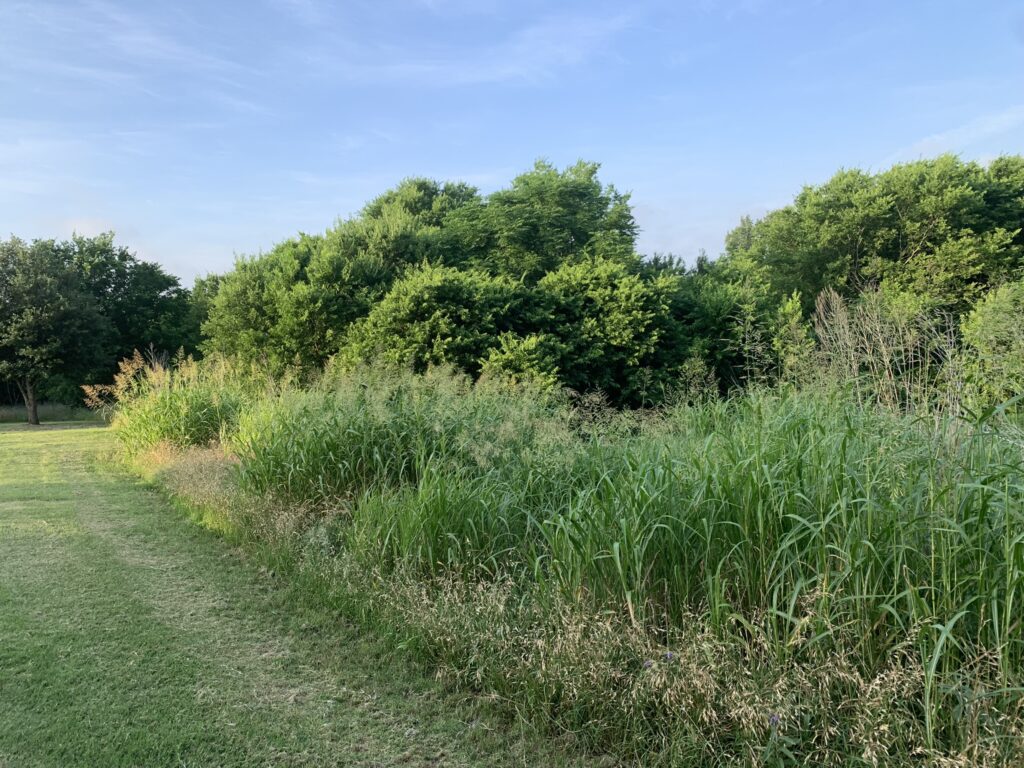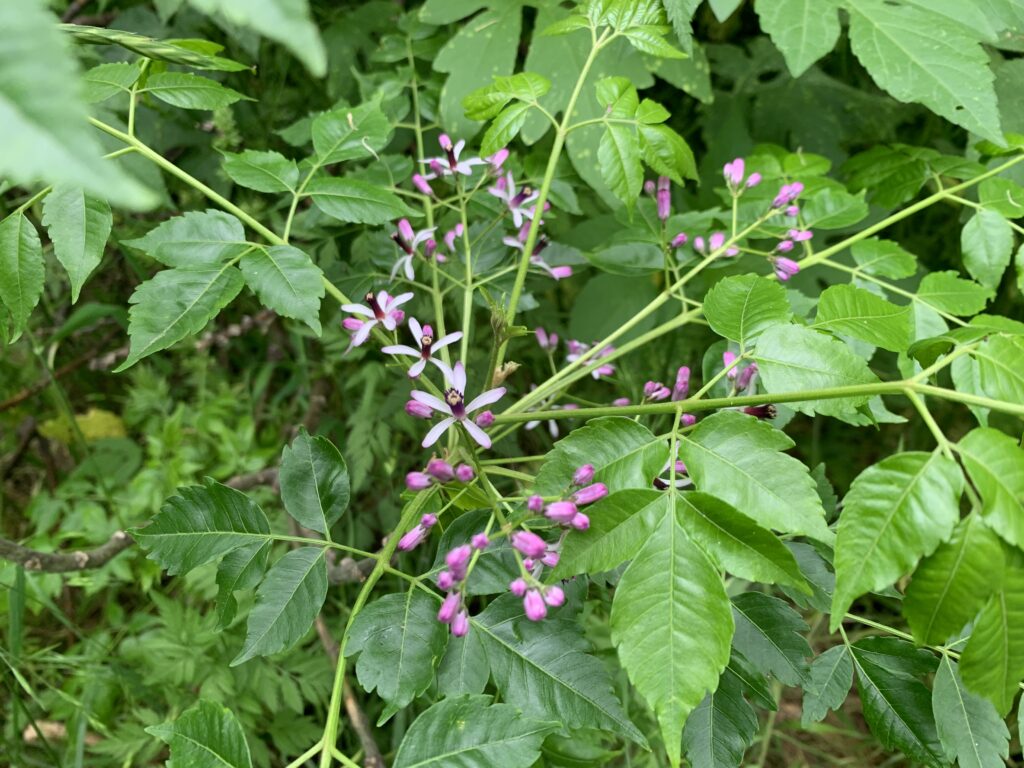The following are the invasive species known to exist in and around Harris Branch Creek:
Bastard Cabbage
Yes, that’s really its name (Rapistrum rugosum). Every spring their tall yellow flowers are seen all over the city, crowding out bluebonnets and other native wildflowers. Work continues to eradicate it from the Harris Branch riparian zone, though we’re making a good dent! It is only an annual, so every year we cut them back and prevent them from reseeding for next year, we’re helping to get it gone from the area forever. (Some seeds stay in the soil for multiple years, so we may still see it pop back up until all the old seed is gone, however. Life finds a way…)

Johnsongrass
Johnsongrass (Sorghum halepense) is a non-native, highly invasive grass species prevalent in Harris Branch’s riparian zone. It spreads rapidly, outcompeting native plants.
Removing as much of the Johnsongrass as we can and replacing it with native grasses and wildflowers will likely comprise the bulk of our volunteer activities for a while. We have a lot of work to do to eliminate it from the area – it’s everywhere!
In the photos below, the tall, bright green stalks are Johnsongrass.


Chinaberry
There’s a few different Chinaberry (Melia azedarach) growing in Harris Branch’s riparian zone. These are very mature trees so removal must be planned carefully. (Location coordinates: 30.361925, -97.611473)


Giant cane reed
Arundo donax, or giant cane, is a major problem where Harris Branch joins Boyce Lane. Annoyingly, it seems to be slowly moving westward towards the trails, sending up stray shoots here and there, such as the one shown below.

Elephant ear
Colocasia esculenta or elephant ears have been found here and there within the creekbed, readily growing where the water is. Luckily it is easy to yank up, but does send out long roots to colonize nearby areas so you just have to make sure you find and yank all the roots as well.

Chinese privet
Ligustrum sinense or Chinese privet is a menace all over the city, and here is no exception. A house that backs up to the creek has multiple mature privets that drop thousands of berries every year, which are then washed down in rains, and scattered by birds and wildlife. Smaller saplings can be yanked up; larger ones can be girdled until they die.

